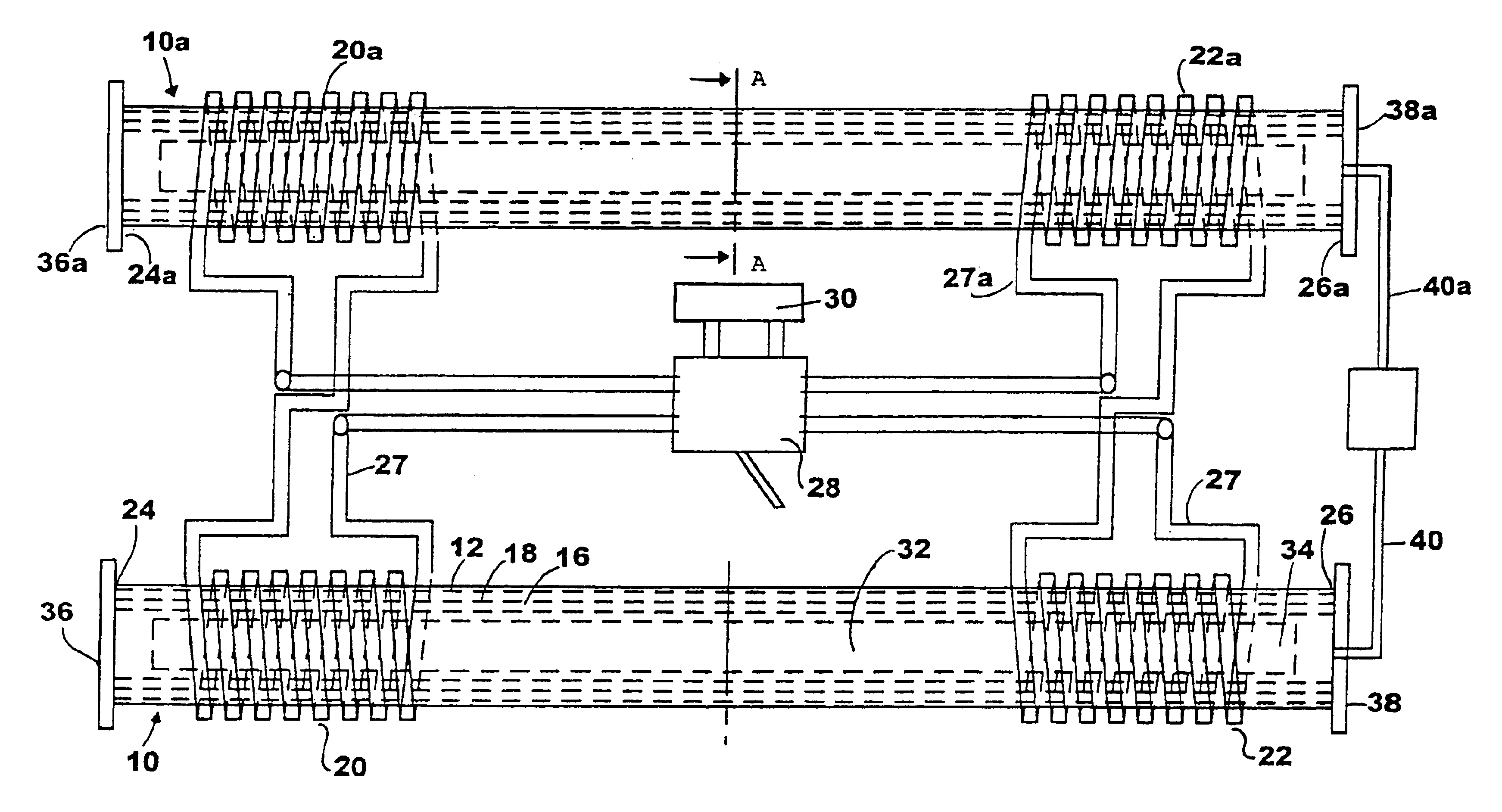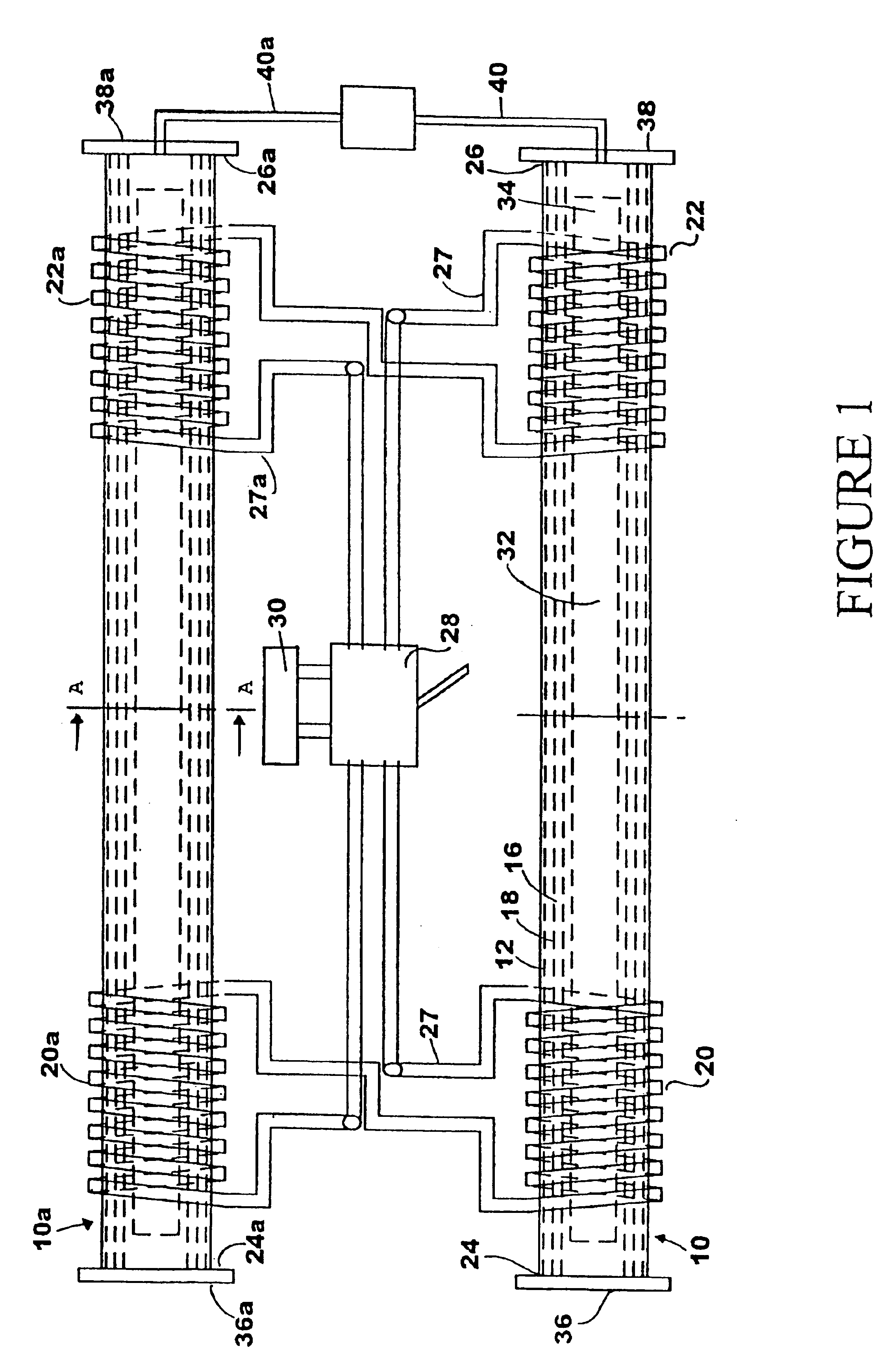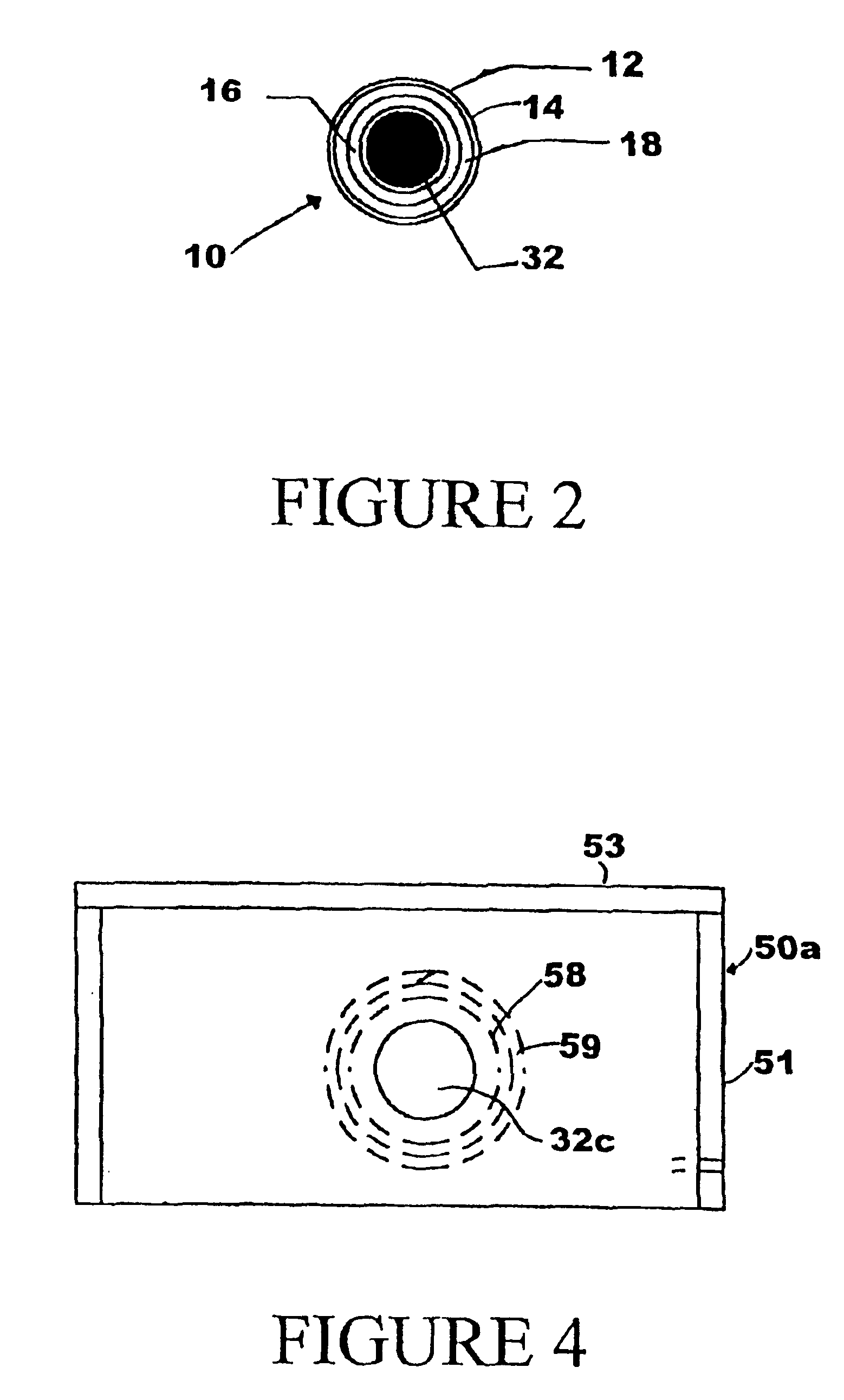Method for making a silicon carbide resistor with silicon/silicon carbide contacts by induction heating
- Summary
- Abstract
- Description
- Claims
- Application Information
AI Technical Summary
Benefits of technology
Problems solved by technology
Method used
Image
Examples
example 1
[0033]In a first example, a 25 cm (10 inch) long recrystallized silicon carbide resistors having a outside diameter of about 3.8 cm (1.5 inches) and an inside diameter of about 0.9 cm, each resin bonded to a single siliconized silicon carbide contact having a length of about 20 cm for a total a length of about 45 cm (17⅛ inches), were placed in the above described furnaces so the joint between the resistor and contact was centered in a coil. The vacuum pump was then activated to draw a vacuum in each furnace of less than about 5 Torr. The coils surrounding the joints were than activated for two minutes. All test resistors made under these conditions showed a very good resistor to contact connection and were considered successful with good electrical continuity.
example 2
[0034]Example 1 was repeated except that the resistors had a diameter of about 2 cm and were about 25 cm (10 inches) long. The resin bonded contacts were also about 25 cm (10 inches) long and a contact was used at both ends of the resistor for a total length of about 75 cm (30 inches). Because of the short length, two sets of resistors and contacts could be placed end to end in a single furnace for at total of four units in both furnaces. The coils were adjusted so a joint was located in the center of a coil on each furnace. The vacuum pump was then activated to draw a vacuum of less than about 5 Torr and coils surrounding the centered joints were activated for 3 minutes 10 seconds. Coils were then moved to center two more joints and again activated after reestablishing the vacuum. Unfinished joints continued to be centered within coils and coils activated (four activations total) to finish the resistors with bonded contacts. A longer activation time for the coils than used in examp...
example 3
[0035]A furnace different than the furnace of examples 1 and 2 was used so that an inert gas atmosphere could be employed rather than a vacuum. The furnace, as shown in FIG. 3, included two furnace boxes 50 and 50a which had axially aligned holes 52, 54, 52a and 54a to permit a unit including a single resistor 32c with resin bonded contacts 34c and 34d, to pass through the openings so that one contact / resistor joint 56 is in one box 50 and an opposing contact / resistor joint 56a is in the other box 50a. The boxes 50 and 50a were made of electrically non-conducting ceramic fiber board, e.g. calcium silicate fiber board available under the MARINITE trademark. Sides 51, top 53 and partitions 54 were made from the board. Tubular furnace chambers 58 and 58a, made from refractory zirconia, were located inside of each of the furnace boxes 50 and 50a and are supported by walls 57, 59, 57a and 59a, respectively. The tubular furnace chambers were wrapped in an aluminum silicate blanket, e.g. 5...
PUM
| Property | Measurement | Unit |
|---|---|---|
| Temperature | aaaaa | aaaaa |
| Temperature | aaaaa | aaaaa |
| Temperature | aaaaa | aaaaa |
Abstract
Description
Claims
Application Information
 Login to View More
Login to View More - R&D
- Intellectual Property
- Life Sciences
- Materials
- Tech Scout
- Unparalleled Data Quality
- Higher Quality Content
- 60% Fewer Hallucinations
Browse by: Latest US Patents, China's latest patents, Technical Efficacy Thesaurus, Application Domain, Technology Topic, Popular Technical Reports.
© 2025 PatSnap. All rights reserved.Legal|Privacy policy|Modern Slavery Act Transparency Statement|Sitemap|About US| Contact US: help@patsnap.com



